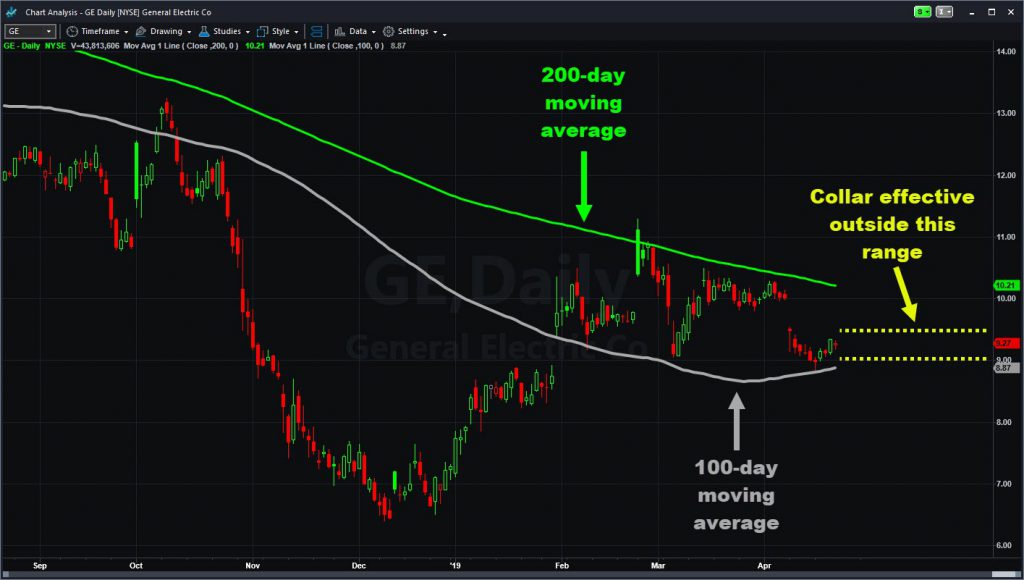Is the bounce over for a once-might industrial stock? One big options trader is treading cautiously before quarterly results.
General Electric (GE) took a beating in 2017 and 2018. It rebounded sharply this year, at one point rising 76 percent from its lowest price. More recently it’s been trapped in a range and today’s largest options trade is bracing for a potential drop.
Here’s a breakdown of the activity in the middle of the lunch hour:
- A block of 116,000 31-May 9 puts was bought for $0.40.
- At the same second, 116,000 31-May 9.5 calls were sold for $0.40.
- That nets out to a cost of zero, aside from commissions.
Puts fix the price where investors can sell a stock, so they generally make money to the downside. Short calls generate income and create an obligation to deliver shares if reach a certain level.

Parsing the Options Activity
Selling calls can be an extremely risky business when done in isolation, but Monday’s transaction was almost certainly paired up with a large position in GE shares.
Here’s what it could mean:
- The investor likely owns at least 11.6 million GE shares. (That’s 116,000 contracts X 100 shares per contract.)
- If GE drops under $9, they’ll get at least $9 per share — no matter how far it may decline.
- If GE rallies over $9.50 before the end of May they’ll have to exit their position at that level.
- Between $9 and $9.50, nothing happens and the options expire worthless.
Known as a collar, the strategy is a common hedging technique. It essentially lets investors surrender potentially big gains (in this case over $9.50) in exchange for avoiding big losses (in this case under $9). See our Knowledge Center for more on managing risk with options.
GE fell 0.95 percent to $9.27 in afternoon trading. It’s gone pretty much nowhere since the end of January, and squeezed into an increasingly tight range between its 100- and 200-day moving averages.
The next big event for the company will likely be first-quarter earnings in a little more than a week, on Tuesday, April 30.



























